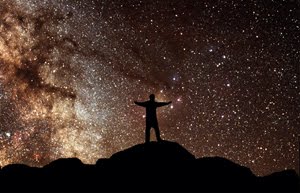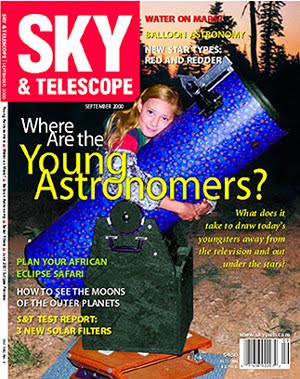A group of six observers spent three nights at Mount Lassen this last new moon. We  went during the week, with our last night August 12th, the peak night for the Perseid Meteor Shower. We stayed in a cabin, in Mineral, a few miles outside the park's southwest entrance.
went during the week, with our last night August 12th, the peak night for the Perseid Meteor Shower. We stayed in a cabin, in Mineral, a few miles outside the park's southwest entrance.
I always marvel at the views of the park entering from the southwest. In past years, camping, the group would stay at Lost Creek Group Campground, or Summit Lake South. Both are great places from which to enjoy the park. We'd enter through the north, via the Manzanita Lake entrance. From there, you get to see some nice lakes, and views of the volcanic peak, however - the views entering the park from Mineral show the amazing display of the color and form that the geothermal and glacial activates have sculpted into the landscape. It is among my favorite drives in California. I also think it is no more driving time back from our observing site at Bumpass Hell Parking lot, to Mineral, than back to Lost Creek Campground, and only slightly longer than to Summit Lakes. The conveniences of having a cabin to relax/recover in during the day cannot be overstated.
Our first night was a cloud-out. This was not a problem, as several of the attendees has just come from other outdoor activies, including backpacking at Yosemite and several nights teaching astronomy at a camp in the Sierra. Getting a good night's sleep on arrival, with the prospect of two clear nights following, was a welcome idea. The second day we all went on a hike, 3.6 miles round trip, to Bumpass Hell. There was still some snow on the trail in places, but the hike was easy and spectacular. Views of the peaks forming the ancient Mt. Brokeoff (Mt. Tehama) volcano, followed by the amazing geothermal pools, steam vents and mud pots, was great fun. Easy hike, and highly recommended. That night we drove out, at 7pm, to the parking lot at Bumpass Hell. The site is over 8200 feet elevation, and looks out over the jagged peaks of that formed Mt. Brokeoff. It is a magical place at sunset, when the deep blue sky glows neon against the jagged silhouettes of the 
surrounding peaks. In the east, the division between night and day (Belt of Venus) rose - a band of crimson between the blue of day and darkening gray-to-black of night. Some of us busied ourselves setting up gear, others sat quietly in chairs watching the show unfold. The second night, the night of the Perseids, was the best, as a one day old moon hung low over Mt. Brokeoff in the west, with bright Venus directly above it, Mars close to its east, and Saturn just a bit further to its west. Night was sweeping over us from the east.
And then the stars came out.
The stars at Lassen are incomparable. I didn't do a limiting magnitude count, but two occurrences testify to the darkness and transparency of the place. Looking down, we could not see our feet. Faces were featureless with only our heads and upper bodies visible against the ambient light. As telling was that charts Steve Gottlieb printed out for potential observing targets, were not deep enough. Mag 16 galaxies were not a challenge. Looking up, the dark lanes in and around the Milky Way beginning in Sagittarius, up through Aquila's "Off Ramp", bordering the star clouds of Cygnus and into the Northern Coal Sack, were black and detailed, with tendrils winding out and disappearing into the surrounding star fields. Since this was the peak of the Perseids, everyone took time to just look up, which provided ample time to marvel at the broad unaided views. This is truly a place where words are inadequate - by day and by night.
As for the Perseids, they showed up, but it was not a big show. Of course I am jaded, having witnessed the Leonid Meteor Storm several years back, but even so, I'd estimate the maximum hourly count was about half this year of what one might wish for.
We observed those two nights until I think close to 3 a.m. We all had special projects. I prepared by downloading (this sounds crazy, but look at the hobby we have!) close to 200 pdf files from Paul Alsing's web-space. Of those, I winnowed the list down to 38 targets, with Steve's help. The  last night, I narrowed it down to 13 remaining. Many were difficult and exotic objects, but the great skies allowed me to find and observe everything I looked for.
last night, I narrowed it down to 13 remaining. Many were difficult and exotic objects, but the great skies allowed me to find and observe everything I looked for.
A big thanks for those friend who attended, for making it such a nice. Richard Navarrete, who booked the cabin, Steve Gottlieb, Ray Cash, Ken Archuleta, and, her first time to Lassen - Mina Reyes.
They were indeed, friendly skies.
Here are the objects I observed, and my notes, all with an 18" f/4.5 Dobsonian.
Abell 55
12mm UHC - obvious although dim. Suspected annular with slight E/W elongation.
Abell 62
12mm UHC - very dim, large, round, with dim central star. Many stars embedded around circumference, glowing. More pronounced glow along southwest edge. Estimate 5' diameter.
Abell 64
7mm no filter - very dim, elongated E/W with possible curve outward to S. Even brightness across object.
Abell 65
12mm - even round glow, no detail. Responds to filters but not a great difference.
NGC 6751
7mm w/UHC - small, round, bright, mottled. With 4.8 Nagler object is transformed - concentric rings around a small torus, and dim central star.
NGC 6772
4.8mm dim, round, even surface brightness across object, fairly sharply defined edges, possible very slight annularity.'
NGC 6778
4.8mm - bright, squashed and rectangular appearance. Central star is just brighter than disk. Dark intrusion into disk gives sense of slight annularity. 1.8x1 ratio.
NGC 6781
7mm - large, bright, round, soft edges, somewhat annular, direct vision easily, about 2' diameter. Filters do not help much.
NGC 6804
4.8mm - large, faint, mottled, very dim central star, other stars seem embedded in shell, sharp edges.
Parsamian 21
4.8mm - dim star on north end of slightly expanding fan of comet shape extending south, appears brighter on western edge. Filter did not help.
Palomar 11
12mm - dim haze with several members resolved. Bright star close by to the north, dimmer but obvious pair equally close to the northeast. No problem seeing this target. 7mm - fairly even glow, round, several dim stars resolve especially near the southern edge.
DWB 111 - Propeller
20mm H-Beta - v shape of stars with double at vertex. Propeller goes from top of V to top of V, most pronounced at the top of both chains in the V shape. Some nebula also shows dipping "down" toward V at the vertex.
Gyulbudaghiam 98-171
7mm no filter. Appears to be a cometary reflection nebula extending ENE from a medium bright field star. Surrounds the star and spreads widely away from it. Dim star embedded in the end of the tail, possible knot about mid-point along the object's major axis.
Sh2-106
12mm UHC - dim star with averted glow surrounding. Glow appears mottled, but has a tight round glow with the star offset slightly to the E, embedded in a larger oval halo extending W. Also in field is long streaky sections of nebulosity extending NW/SE and most pronounced involving stars to the SE, and to their north.
Sh2-112
20mm UHC - dim star but brightest in field, embedded in dim but obvious glow extending in fan shape NE and S, with dark intrusions. Nebula has sharp edge along the NE section. Other areas of nebulosity are throughout the region, especially pronounced to the E over 40', dark lanes are clear. Very easy location close to Deneb.
Sh2-91
20mm - OIII - nice supernova remnant strip, arcing SW/NE around a bright easy to locate star just off Alberio in Cygnus. Brightest section is due S of the star, strip is quite long, over 40'. Check to see if there is a second strip paralleling the one observed, as there are hints of it in the field.
Sh2-101
20mm - OIII - very nice large swath of HII with bright stars embedded at opposite ends, including some doubles. Bright single star is at N end of object, two pronounced arcs of nebulosity extend south along the E and W edges, with a faintly nebulous center. This is an oval, with two pair of stars embedded in the S end, where nebulosity is its most obvious. The southern part is actually a large knot of nebulosity with the pairs of doubles clearly embedded. Shell is least obvious to the east, and also seems to have some nebulosity extending further SE from the S edge.
Simeis 3-210
20mm - OIII - long strand of nebulosity that is probably an outlying section of the Veil Nebula. Confused at first with the 52 Cygni section of the Veil due to the embedded star in this target. Strand extends SE/NW and crosses entire length of 20 Nagler - 47'. View was dim, but direct vision.
WR 134
20mm - OIII - very distinct Wolf Rayet nebula, with western section most pronounced, extended north and around to the east, with a cavity between, having a chain of four stars in the middle and showing some involved nebulosity. Like a very large Crescent Nebula, but sparse on the southeast section. Still, other dim nebulae are throughout the area on the SE side.
Photos 1, 3, and 4 are by Richard Navarrete
Saturday, August 14, 2010
Friendly Skies
Posted by
Prana Ylem
at
12:19 PM
0
comments
![]()
Subscribe to:
Posts (Atom)













